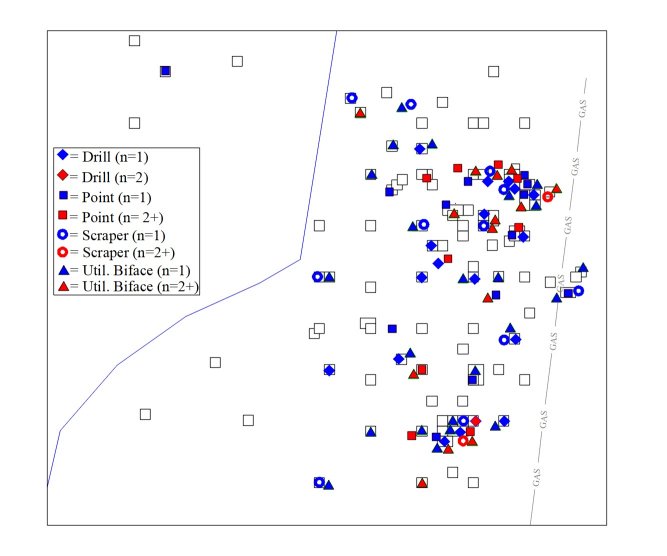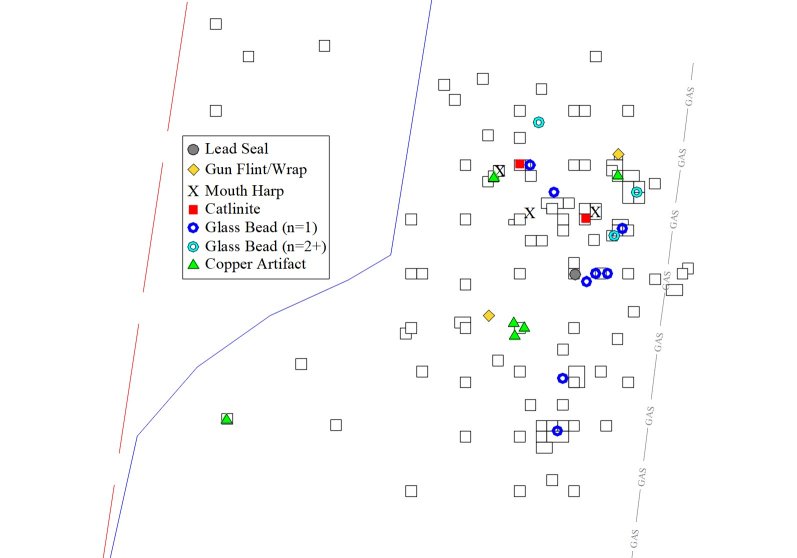The site’s features and material culture tell us about some of the activities that people conducted at the JWW2-2 Site. Many activities are archaeologically invisible because they leave no cultural material (such as stories and dances) or because they produce or use material culture that did not preserve (such as reed baskets). By analyzing the quantities and types of tools and tool-making debris, preserved remains of meals (such as charred corn or deer bones), and the varieties of pottery present, and associating this information with features, we can identify areas used by Indigenous people for particular activities.
For example, we found that the site had two major activity areas. These can be seen when looking at the distribution of chipped stone tools (projectile points, drills, and scrapers) and groundstone tools like hammerstones. There was a dense cluster of material culture at the north part of the site and a smaller cluster at the south end, while in the middle there were few such material culture items. This pattern was also true for stone tool debris, though pottery and animal bones were found mostly in the north cluster. Most of the large Late Woodland storage pits were found in this north area. No animal bones were recovered from Late Archaic or Transitional features.
The space between the clusters of material culture was a zone where the smudge pit features were clustered. These features did not yield many pieces of material culture , but they were the locations where an important activity occurred – hide smoking. Smudge pits are small, single-use hearths that produced dense smoke for curing hides. Accounts of Indigenous leather craft note that hide smoking was necessary to produce soft, weather-resistant leather. At JWW2-2 Site, the material to used to produce the dense smoke was bark, though nutshells, corn cobs, and rotten wood were used at other sites. Smudge pits were dated to the Late Archaic, Transitional, and Historic Periods. Other evidence for hide production included microscopic wear marks on some of the stone drills that show the tools were used to perforate dry leather. These tools were found in Late Archaic and Late Woodland features, though many more drills were found distributed around the site in the plow zone. Smudge pits were the only features directly associated with the Historic Period, suggesting that 18th century Indigenous people used the site primarily as a hide processing station. People from earlier periods conducted a variety of activities at the site in addition to hide working, including butchering, nut processing, wood-working, cooking, and stone tool production.

Locations of chipped stone tools.

Locations of groundstone and roughstone tools.